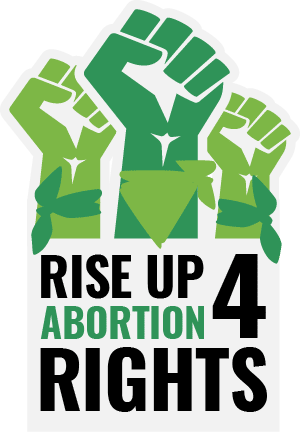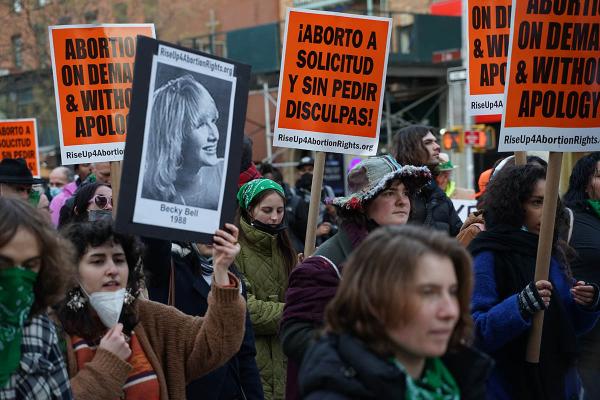On March 8 – International Women’s Day – in rallies and marches in New York and 12 other cities across the country – people declared their refusal to let the Supreme Court decimate women’s rights and gut or eliminate the right to abortion.
Hundreds marched through the streets of Manhattan, Los Angeles, and Berkeley. There were protests on college campuses in California and Texas, and by high school students in several locations. One woman decorated her pickup with Rise Up 4 Abortion Rights banners and drove 500 miles from Little Rock to Austin. Prominent speakers and veteran fighters for women’s rights spoke in New York and Los Angeles, and in many places, there was an important representation of fierce young people.
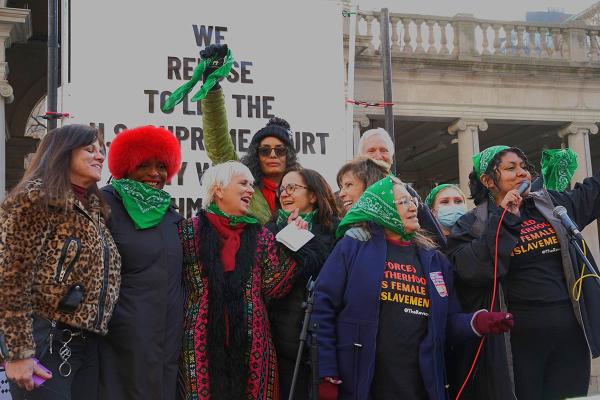
Many protesters just about everywhere wore green bandanas – like the women of Argentina and Colombia, who recently won historic victories for abortion rights by taking to the streets in sustained and growing protest, RiseUp4AbortionRights.org has taken up the green bandana as a symbol of resistance.
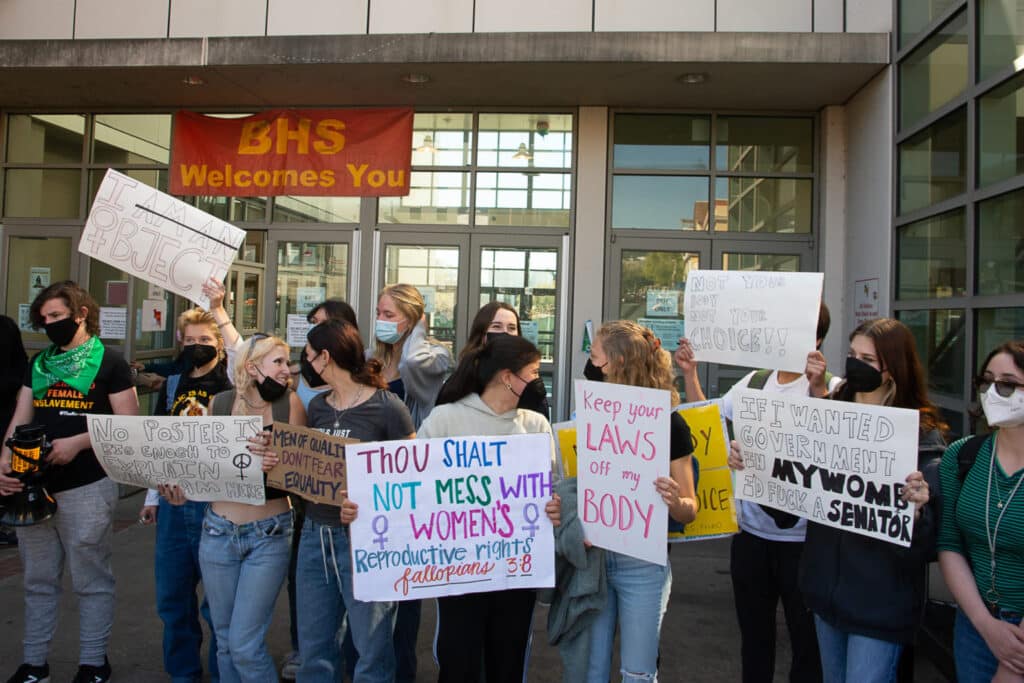
Many left the protests with a plan for beginning to prepare to intensify and broaden the fight to defend the right to abortion in the weeks ahead: March 19/20 mass meetings to get organized; April 8, wearing green everywhere; April 9 and back in the streets with mass protests and marches.
Below are some brief snapshots of the sights and sounds of International Women’s Day, 2022. More will be posted.
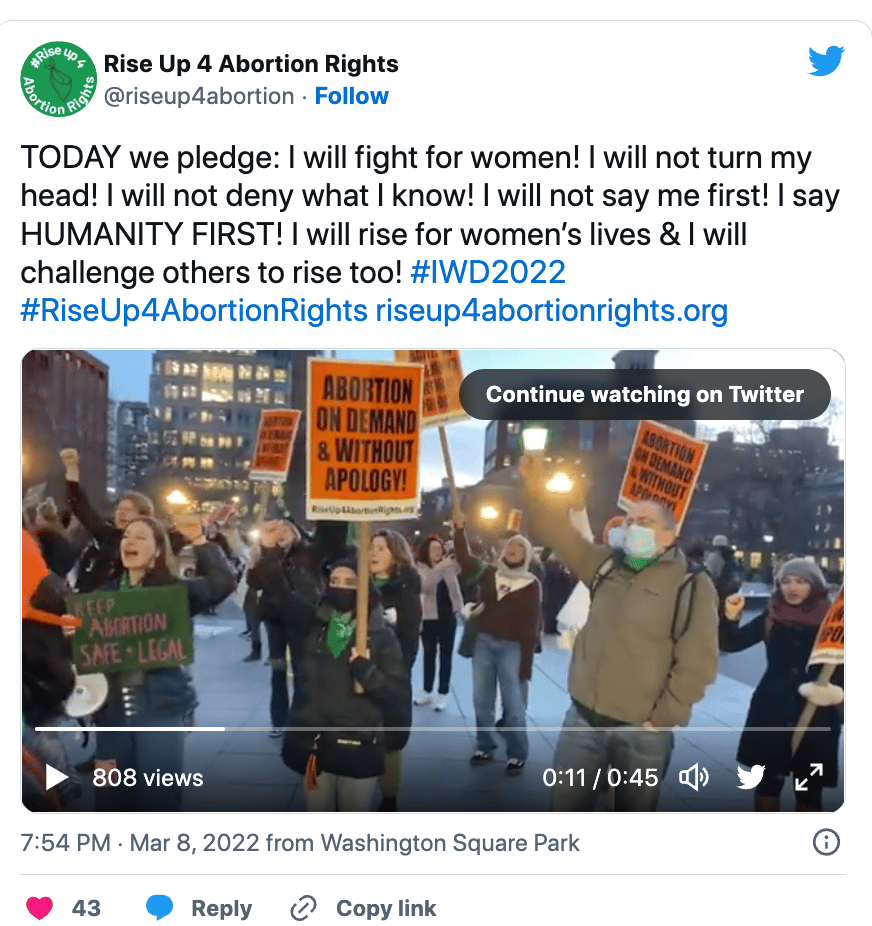
New York
The flagship International Women’s Day rally and march in New York included powerful opening speeches, hundreds of people spirited, angry, and determined people marching through lower Manhattan, and ended with participants taking this pledge together: Read More on Twitter
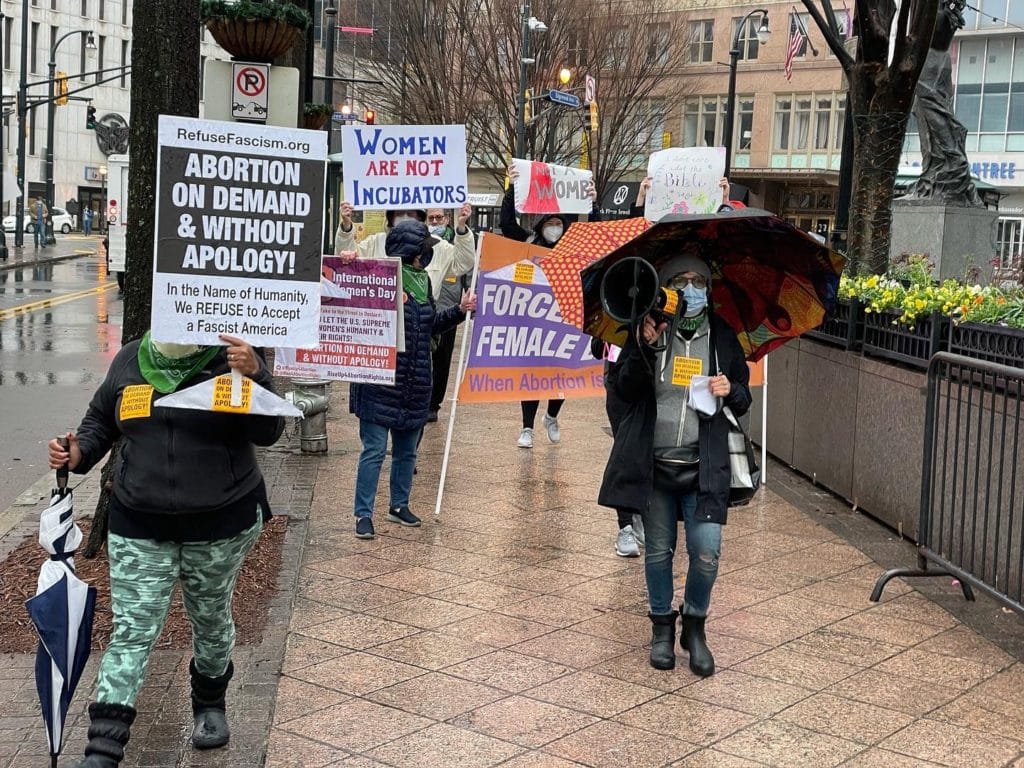
Atlanta
Protestors in Atlanta marked #international women’s day 2022 by taking to the streets downtown, engaging with students, and calling on everyone to join the fight to stop the US Supreme Court from denying women’s humanity and rights! Abortion on demand & without apology!
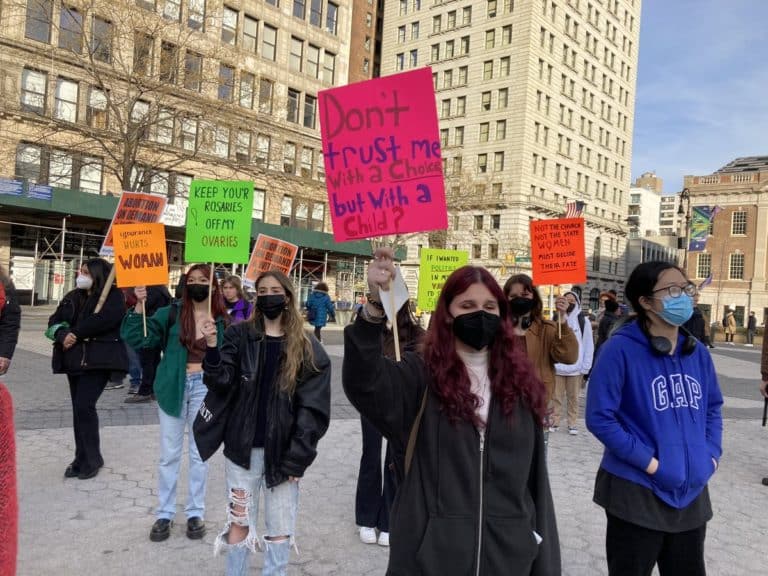
Austin
About 40 people participated in a protest on and around the campus of the University of Texas. Some took flyers and organizing materials like the green bandanas and signed up. Some skipped class and stayed for the whole rally. A report said a “confrontation with some ‘antis’ helped break things open and brought out the latent anger in many students, just as we marched onto the campus. Read More on Twitter
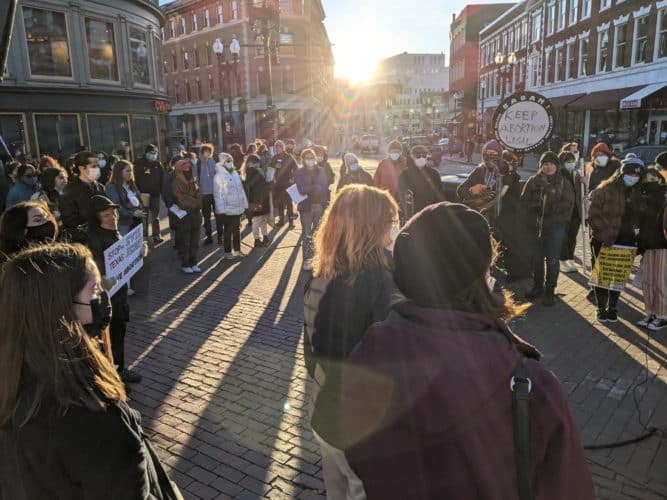
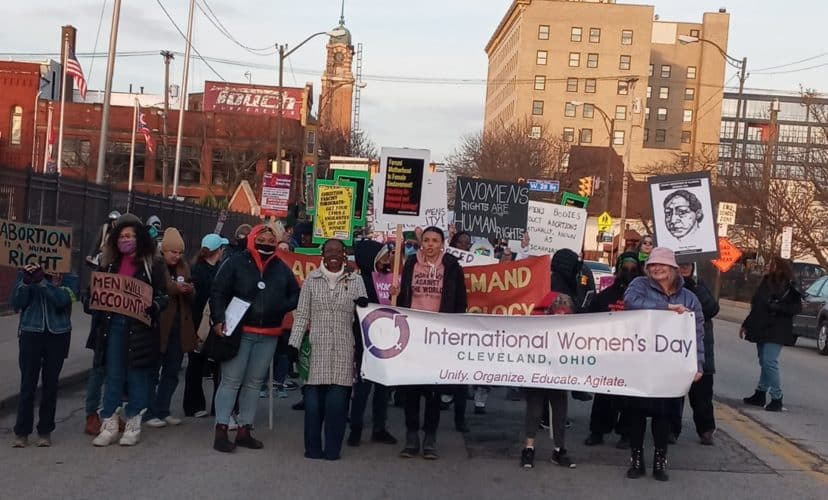
Cleveland
A report from Cleveland said that about 100 people took to the streets on International Women’s Day, and that “there will be a LOT more on 4/9! Abortion on Demand & WITHOUT Apology!”

Chicago
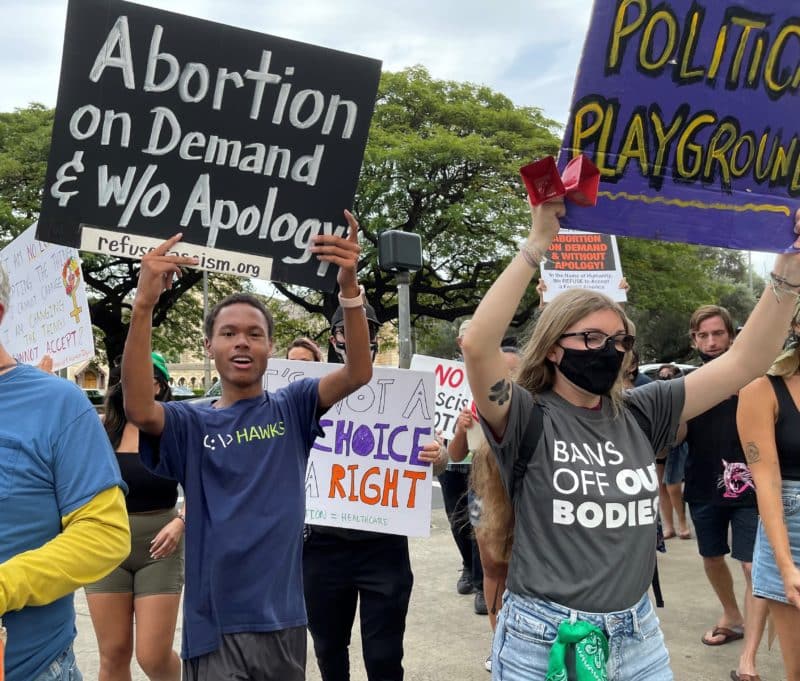
Honolulu
An organizer in Honolulu wrote that “A total of about 80 people participated in Honolulu’s International Women’s day rally and march. There were lots of young, new faces, mixed with a smaller number of older people. The energy was very high; people were attentive to the rally.”
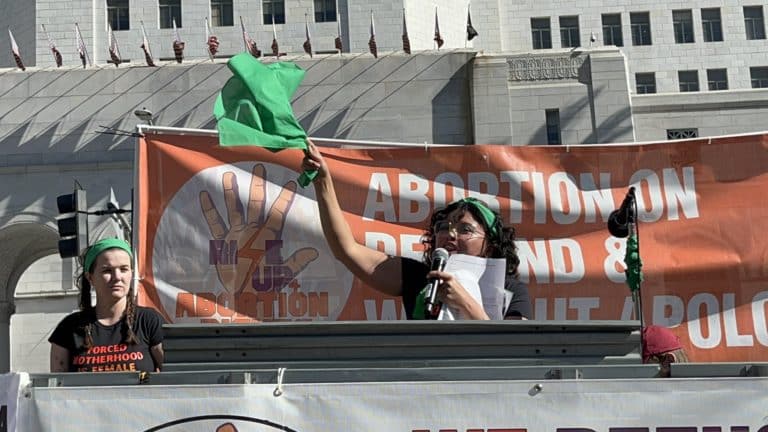
Los Angeles
Approximately 100 people rallied and marched in Los Angeles. A report sent to Rise Up 4 Abortion Rights said, “We had a great day out here! This was an excellent learning opportunity for the public, many didn’t know what was going on in the Supreme Court or how catastrophic the situation could be. We had a diverse group of speakers with an international perspective that provided moving speeches with well-argued points that captivated the entire crowd; these include Ionic Boom, Reverend Frank Wolfe, and Lawden Barzargan.” Read More on Twitter
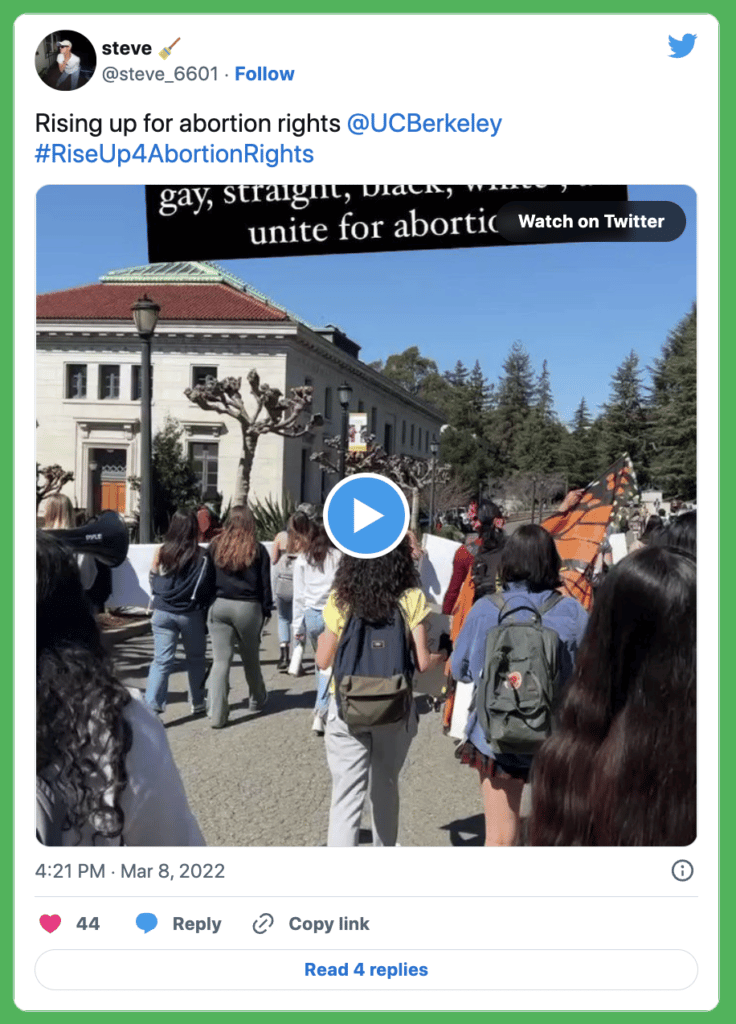
San Francisco Bay Area
On International Women’s Day, University of California students and professors, high school students, activists, the Revolution Club, Raging Grannies, and more marched against the attacks on abortion that could make abortion illegal in 21 states if Roe v. Wade is overturned. At one point a Berkeley student and protest organizer spoke compellingly on the need to defend the right to abortion. “Today we have an opportunity and a responsibility to demonstrate that we will not stand by idly while reproductive rights are under fire across the country.” Read More on Twitter
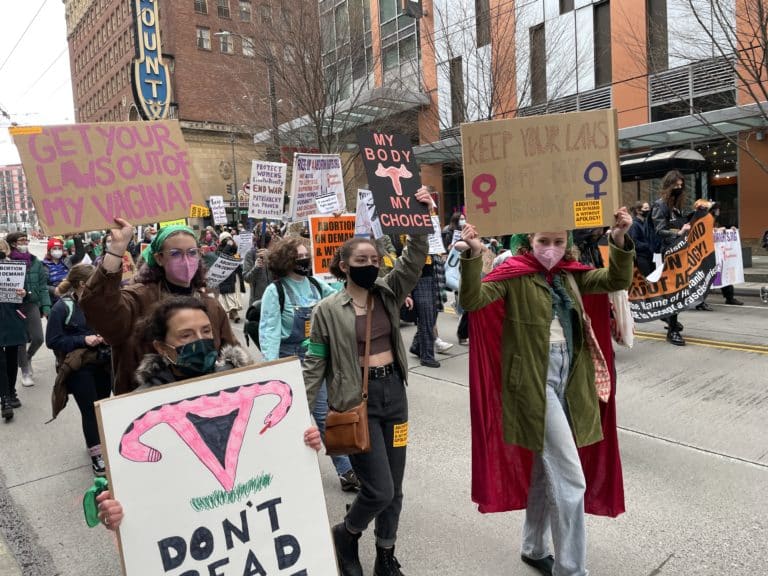
Seattle
About 150 people rallied, marched, and held die-ins in Seattle. They included small groups from three high schools and one middle school; students from the University of Washington, and Seattle University. people from a Jewish congregation, and a clinic defense team. Read more on Twitter
